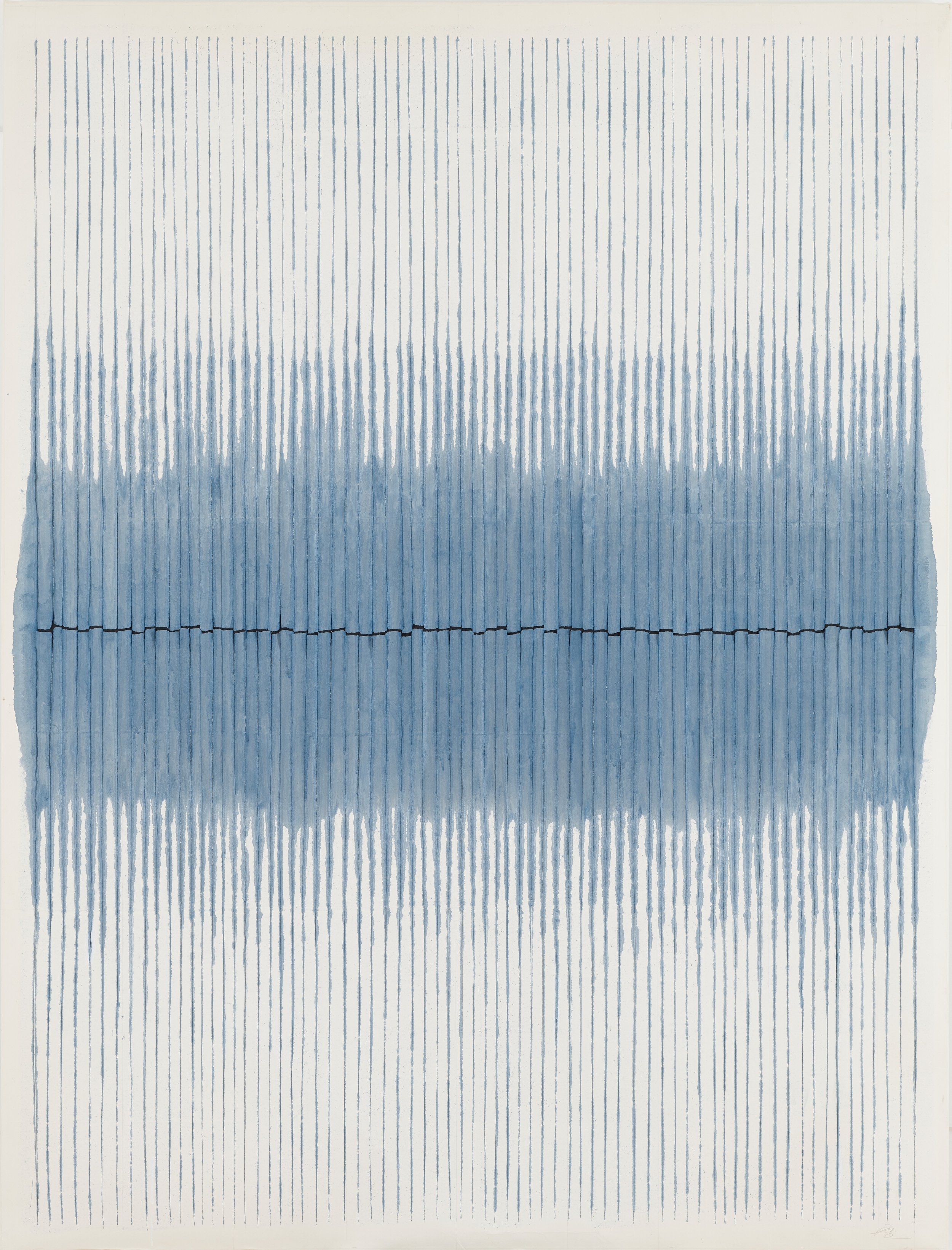Lineages
Korean Art at The Met - A Journey Through History and Culture
The Met
1000 5th Ave
New York, NY
In the bustling heart of New York City, nestled within the hallowed halls of The Metropolitan Museum of Art, lies an extraordinary exhibition titled Lineages: Korean Art. This remarkable display, which ran through the summer of 2023, offers a compelling narrative of Korea's rich artistic heritage, tracing the evolution of Korean ceramics from the Goryeo dynasty (918–1392) through to contemporary interpretations.
The Essence of Celadon
EGW Luxury Magazine Fall/Winter 2024
At the forefront of this exhibition is the captivating beauty of celadon ceramics, often recognized by their ethereal shades of blue and gray. Known as cheongja in Korean, meaning "green ware," celadon embodies the aesthetic refinement of the Goryeo dynasty. These pieces were not merely functional objects but symbols of sophistication and artistry, adored for their unique hue and intricate surface decorations. The exquisite glazes of celadon, resulting from a meticulous firing process, created a dreamlike quality that continues to captivate viewers.
One cannot help but be drawn into the shimmering depths of a celadon bowl, intricately molded with designs of boys playing among lotuses. This piece, dating back to the early 12th century, exemplifies the artistry of the Goryeo era, where each item was a testament to the skill and creativity of the potters. The museum’s collection, including stunning works such as the gourd-shaped ewer adorned with waterfowl and reeds, showcases not only the technical mastery but also the deep cultural significance embedded in these ceramics.
Buncheong: The Emergence of New Forms
As Korea transitioned to the Joseon dynasty (1392–1910), so too did its ceramics. The birth of buncheong ware—a term coined in the 1930s—marked a departure from the refined elegance of celadon. Emerging in the 15th and 16th centuries, buncheong displayed coarser bodies and more expressive motifs, reflecting the changing political and socioeconomic landscape.
Regional characteristics began to define this style, with distinct variations found across provinces. The kilns of Gyeongsang produced intricately inlaid designs, while those in Jeolla favored incised or sgraffito techniques, allowing for an exploration of artistic expression that diverged from the past. The intricate bottles with flowering plant motifs from the Joseon era, now part of The Met’s collection, stand as rare remnants of this period, each piece a whisper of the artisans’ intent and cultural significance.
Porcelain: The Crown Jewel of Joseon
In contrast to the earthy tones of buncheong, the refined white porcelain known as baekja became the hallmark of the Joseon dynasty. Initially produced in royal kilns, the accessibility of porcelain gradually spread throughout Korean society, transcending class boundaries. The elegance of the moon jar—a large, unadorned vessel—became emblematic of the aesthetic values of the time, marrying form and function in a singular vision.
As the exhibition unfolds, visitors are greeted by the serene presence of moon jars, their simple beauty a reminder of the values of humility and purity. In the 18th century, these jars were revered not only for their utilitarian purpose but also for their role in domestic life, embodying the Confucian ideals of simplicity and grace.
A Contemporary Dialogue
The Lineages exhibition does not merely linger in the past; it resonates with contemporary dialogues through the works of modern artists who have been inspired by traditional Korean art forms. Artists like Kim Whanki and Lee Seung-taek explore and reinterpret these historical legacies, challenging notions of value and cultural identity.
Kim Whanki’s 1954 painting Moon and Jar embodies a profound connection to the past while simultaneously embracing abstraction. The juxtaposition of the white jar against a vibrant blue background evokes a sense of nostalgia, as if the artist is reaching back through time to grasp the essence of Korean ceramics. His use of color and form becomes a bridge between generations, inviting viewers to engage with both the historical and the modern.
In contrast, Lee Seung-taek’s Tied White Porcelain disrupts traditional conventions by intertwining a ceramic "rope" with the jar, creating a tension between the expected and the unexpected. This piece challenges perceptions of functionality and artistry, prompting a dialogue about the evolution of materials and meanings in contemporary art.
The Legacy of Korean Ceramics
As visitors traverse through the Lineages exhibition, they witness not just the evolution of ceramics but also the profound cultural narratives that accompany each piece. The history of Korean art is woven into the fabric of its society, influenced by imperialism, colonization, and the quest for identity. The interplay between traditional techniques and modern interpretations reflects an ongoing dialogue about heritage, memory, and innovation.
Through the lens of ceramics, Lineages: Korean Art at The Met invites us to reflect on the enduring nature of art as a vessel for cultural expression. It serves as a reminder that each piece—whether a delicate celadon bowl or a contemporary sculptural form—carries with it a lineage of stories, emotions, and histories that transcend time. As we engage with these artworks, we are not merely spectators but participants in a continuum of creativity that bridges past, present, and future.
Lineages: Korean Art is a celebration of the enduring spirit of Korean artistry, inviting us to appreciate the intricate layers of history and culture embedded within each piece. It beckons us to explore, to question, and to find beauty in the dialogue between tradition and modernity, allowing us to connect with the rich heritage of a vibrant culture.
You can explore the "Lineages: Korean Art at The Met" exhibition here. This exhibition showcases both historic and contemporary Korean artworks, from ancient celadons to modern sculptures, and is on display at The Met Fifth Avenue, Gallery 233, until October 20, 2024.

분청사기 인화 국화 무늬<경주장흥고>명대접 조선 粉靑沙器印花菊花文‘慶州長興庫’銘大楪 朝鮮 Dish with inscription and decorated with chrysanthemums and rows of dots Joseon dynasty (1392–1910), mid 15th century Buncheong ware with stamped design H. 2 1/4 in. (5.7 cm); Diam. 7 1/4 in. (18.4 cm) Gift of Mr. and Mrs. Samuel Colman, 1893 93.1.216

Kim Whanki (김환기金煥基) Moon and Jar ( 달과 항아리 ) Korea, 1954 Oil on canvas 64 × 38 3/16 in. (162.6 × 97 cm) Leeum Museum of Art

Lee Yootae A pair of Figures--Inquiry (one of the pair) Korea, 1944 Ink and color on paper 83 7/16 × 60 1/4 in. (212 × 153 cm) National Museum of Modern and Contemporary Art, Korea (MMCA)

Byron Kim Goryeo Green Glaze #1 Korea, 1995-96 Oil on linen 84 × 60 in. (213.4 × 152.4 cm) Leeum Museum of Art

분청사기 철화 초화문늬 병 粉靑沙器 鐵畵 草花文 瓶 Bottle decorated with flowering plant Joseon dynasty (1392–1910), late 15th–early 16th century Buncheong ware with white slip and iron-brown H. 10 in. (25.4 cm) Purchase, Bequest of Mary Stillman Harkness, by exchange, and Friends of Korean Art Gifts, 2021 2021.126

Suh Se Ok People Korea, 1988 Ink on paper 73 5/8 × 73 5/8 in. (187 × 187 cm) Framed: 80 1/8 × 80 1/8 × 2 3/8 in. (203.5 × 203.5 × 6 cm) National Museum of Modern and Contemporary Art, Korea (MMCA)

탄은 이정 대나무 조선 灘隱 李霆 墨竹圖 朝鮮 Yi Jeong (Korean, 1541–1626) Bamboo in the Wind Joseon dynasty (1392–1910), early 17th century Hanging scroll; ink on silk with gold on colophon Image: 45 1/2 x 21 in. (115.6 x 53.3 cm) Overall with mounting: 87 13/16 × 26 5/16 in. (223 × 66.8 cm) Overall with knobs: 87 13/16 × 28 3/4 in. (223 × 73 cm) Mary Griggs Burke Collection, Gift of the Mary and Jackson Burke Foundation, 2015 2015.300.299

Baik Nam-soon Paradise Korea, 1936 8-panel folding screen; oil on canvas 68 1/8 in. × 12 ft. 2 7/16 in. (173 × 372 cm) National Museum of Modern and Contemporary Art, Korea (MMCA)

Lee Bul, South Korean, born 1964 Untitled (cyborg leg) Korea, 2000 Porcelain H. 21 in. (53.3 cm); W. 9 in. (22.9 cm); D. 14 in. (25.6 cm) Gift of Thaddaeus Ropac, 2023 2023.285.1

Kwon Young-woo Untitled Korea, 1984 Ink and gouache on Korean paper 88 3/16 × 66 15/16 in. (224 × 170 cm) Leeum Museum of Art

Lee Jong-gu Earth at Oziri (Oziri People) Korea, 1988 Acrylic and collage on a grain bag 78 3/4 × 66 15/16 in. (200 × 170 cm) National Museum of Modern and Contemporary Art, Korea (MMCA)

Lee Bul, South Korean, born 1964 Untitled (cyborg pelvis) Korea, 2000 Porcelain H. 14 in. (35.6 cm); W. 12 in. (30.5 cm); D. 14 in. (35.6) Gift of Thaddaeus Ropac, 2023 2023.285.2

Byron Kim Goryeo Green Glaze #2 Korea, 1996 Oil on linen 84 × 60 in. (213.4 × 152.4 cm) Leeum Museum of Art

Unidentified artist Portrait of a Woman Korea, early 20th century (ca. 1920‒40) Framed painting; ink and color on cotton 33 3/4 x 20 1/2 in. (85.7 x 52.1 cm) Rogers Fund, 1943 43.12

Kim Hong-joo Untitled Korea, 1993 Oil on canvas 57 1/16 × 44 1/8 in. (145 × 112 cm) Leeum Museum of Art



